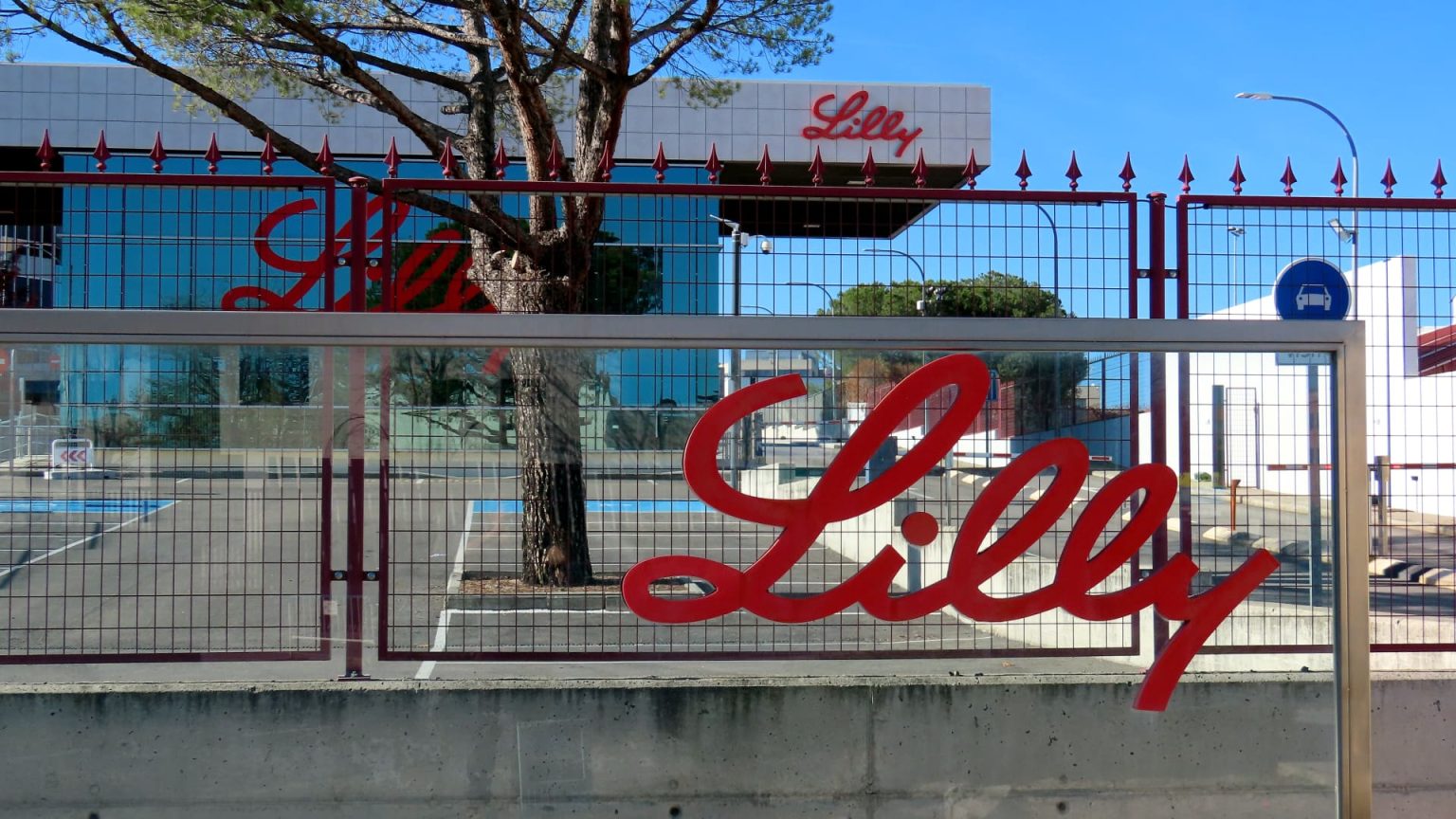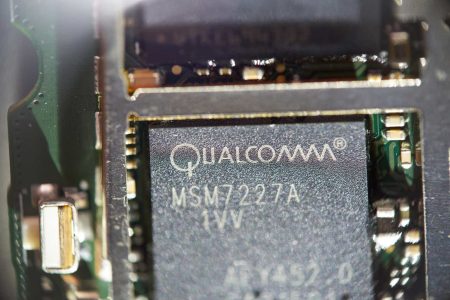Morgan Stanley analysts believe the market for obesity drugs is even larger than initially expected, a finding that aligns with our rosy outlook on Eli Lilly (LLY). Meanwhile, commentary from one of Danaher ‘s (DHR) competitors is sending shares of the Club holding surging Friday, while the top boss at one of our chipmakers offered reassuring remarks around managing geopolitical risks. Here’s our full take on the headlines and their implications for our investments in the three companies. LLY YTD mountain Eli Lilly (LLY) year-to-date performance. The news: Obesity drugs could generate annual sales up to $77 billion in 2030, Morgan Stanley said Friday, a nearly 43% increase to the firm’s previous forecast. And despite increasing competition from other pharmaceutical companies, Morgan Stanley analysts expect Club name Eli Lilly and rival Novo Nordisk (NVO) to remain the leading weight-loss players, with a combined market share around 82% over the long term. “The enormous supply chain investments Novo and Lilly are making today will create significant barriers to entry in the future,” the firm wrote. Insurance reimbursement for obesity drugs has spread quicker than Morgan Stanley expected, which helped prompt the firm to update its multiyear sales outlook. The firm’s analysts said that, if not for supply shortages, sales of Novo’s obesity therapy, Wegovy, would have likely topped $7 billion in the U.S. this year. Currently, Wall Street estimates Wegovy’s 2023 sales to be $4.46 billion, according to FactSet, rising to $7.76 billion in 2024. Wegovy belongs to a class of incretin drugs known broadly as GLP-1s , which mimic a gut hormone that, when released, can suppress appetite. Novo also sells a GLP-1 called Ozempic that’s approved in the U.S. to treat type-2 diabetes. Eli Lilly’s leading GLP-1 is called Mounjaro, and unlike Wegovy and Ozempic, it targets a second hormone involved in blood-sugar control. U.S. regulators cleared Mounjaro as a type-2 diabetes treatment last year, and they’re expected to expand its use to include obesity by year-end. The Club’s take: Our multiyear optimism on Eli Lilly is rooted in the strength of its diabetes-and-obesity drug franchise, and Morgan Stanley’s updated outlook on the opportunity serves to reinforce our viewpoint. It offers support to Jim Cramer’s contention that Mounjaro could prove to be the greatest selling drug of all time . One of the brightest spots in Morgan Stanley’s report is insurance reimbursement for Wegovy exceeding analysts’ expectations. As we’ve written before , broad coverage from insurers is necessary for GLP-1 weight-loss drugs to reach their maximum commercial potential. However, there’s been some concern that insurance companies would be hesitant to cover this new class of obesity drugs, which carry hefty price tags, along with side effects like nausea and vomiting. DHR YTD mountain Danaher (DHR) year-to-date performance. The news: Danaher shares are getting a lift Friday, climbing around 5% to more than $257 each. The moves comes after German life-sciences competitor Sartorius delivered encouraging news to investors alongside its second-quarter earnings report. Sartorius said its customers have signaled new orders should start picking up late in the third quarter, offering hope that inventory destocking and weak demand are bottoming out. Those dynamics have hurt both Danaher and Sartorius, as the biopharmaceutical industry emerges from its Covid-19 boom. Both companies have lowered their full-year guidance in recent months. Danaher did so in late April, while Sartorius followed suit in mid-June. Fortunately, Sartorius on Friday affirmed its revised 2023 outlook, suggesting conditions haven’t taken an unexpected turn for the worse over the past month. The Club’s take: This is favorable news for Danaher, which has been one of our most frustrating holdings lately given its reputation for reliability. We’ve been patient after its disappointing first-quarter earnings and 2023 guidance cut, believing that inventory destocking and soft demand are temporary issues. The comments from Sartorius lend support to that idea. The best-case scenario would be that when Danaher reports second-quarter results Tuesday, it reaffirms its already-lowered guidance, bolstering optimism around a second-half recovery. The worst-case scenario would be that the company needs to take numbers down a little further, though that would likely be the last revision needed this year. The bottom line is that Danaher’s report Tuesday should help us firm up our next steps with the stock. We’re also hopeful that a pickup in initial public offerings from biotech startups – key customers for Danaher – could be another tailwind for the stock. AMD YTD mountain Advanced Micro Devices (AMD) year-to-date performance. The news: Advanced Micro Devices (AMD) will consider steps to diversify its chipmaking process, the Club holding’s CEO, Lisa Su, told Nikkei Asia on Friday. On a visit to Japan, Su told the Tokyo-based financial publication that this could include using manufacturers other than its No. 1 supplier, Taiwan Semiconductor Manufacturing Company (TSM), as well as making some chips at the company’s fabrication plants outside Taiwan. Such considerations are being taken to “ensure that we have the most resilient supply chain,” Su said. The comments come amid mounting tensions between China and Taiwan, a democratically governed island that Beijing claims as part of Chinese territory. The largest contract chipmaker in the world, TSM has long produced cutting-edge semiconductors for companies like fellow Club holdings Apple (AAPL) and Nvidia (NVDA). AMD, Apple and Nvidia design the chips in-house, then outsource the highly technical manufacturing to TSM. The Club’s take: In general, we like to see management teams acknowledge geopolitical risks and develop paths to minimize them. It’s no different this time with Su’s comments in Tokyo, even if it’s a bit sparse on specifics. If it wasn’t clear before the Covid pandemic, the importance of diversified supply chains is certainly well-understood now. Last fall, for example, we cheered Apple’s reported plans to buy some chips from TSM’s nascent Arizona plant. AMD has previously indicated that it also plans to be an early customer of that Arizona facility, which is under construction. The bigger near-term questions for the company are around demand for its traditional server chips, and the rollout of its artificial intelligence-focused chip, which is meant to compete with Nvidia’s market-leading offering. There’s been some concern on Wall Street that all the AI hype may be impacting spending on traditional-server chips, a market in which AMD has been stealing share from Intel (INTC) for years. We’re likely get more information from AMD on this dynamic – as well as on its AI chip – on Aug. 1, when the company reports earnings. (Jim Cramer’s Charitable Trust is long LLY, AMD, NVDA, AAPL and DHR. See here for a full list of the stocks.) As a subscriber to the CNBC Investing Club with Jim Cramer, you will receive a trade alert before Jim makes a trade. Jim waits 45 minutes after sending a trade alert before buying or selling a stock in his charitable trust’s portfolio. If Jim has talked about a stock on CNBC TV, he waits 72 hours after issuing the trade alert before executing the trade. THE ABOVE INVESTING CLUB INFORMATION IS SUBJECT TO OUR TERMS AND CONDITIONS AND PRIVACY POLICY , TOGETHER WITH OUR DISCLAIMER . NO FIDUCIARY OBLIGATION OR DUTY EXISTS, OR IS CREATED, BY VIRTUE OF YOUR RECEIPT OF ANY INFORMATION PROVIDED IN CONNECTION WITH THE INVESTING CLUB. NO SPECIFIC OUTCOME OR PROFIT IS GUARANTEED.
Morgan Stanley analysts believe the market for obesity drugs is even larger than initially expected, a finding that aligns with our rosy outlook on Eli Lilly (LLY). Meanwhile, commentary from one of Danaher‘s (DHR) competitors is sending shares of the Club holding surging Friday, while the top boss at one of our chipmakers offered reassuring remarks around managing geopolitical risks.
Read the full article here















